Resistance Bands: Are They Good For Arthritis In The Knee?
(Updated 8/23/24)
Are you tired of dealing with knee pain due to arthritis?
I get it! Trust me, you’re not alone.
Knee osteoarthritis is a common problem for most older adults, and it sucks.
If you’re like me, you are always searching for the best ways to manage your knee pain.
I find regular low-impact exercises and weight training to be a huge help.
During a flare-up of my arthritis, a physical therapist suggested using resistance bands instead of free weights for some of my strength training.
This recommendation has been a game-changer for me.
Resistance bands or elastic bands can replicate most free-weight exercises, and they don’t put as much pressure on the joints.
Plus, they have different resistance levels, making them an awesome tool no matter where you are on your fitness journey.
Win-win baby!
Since including resistance bands in my daily routine, I have been able to build strength and improve my flexibility without causing increased joint pain.
Now, let’s check out how you can use these bad boys to decrease pain and improve your muscle strength.
This post may contain affiliate links. As an Amazon Associate, I earn from qualifying purchases. This means I may earn a commission at no extra cost to you should you choose to make a purchase using my link.
How Resistance Bands Can Help with Knee Arthritis
Improving Joint Mobility
Using resistance bands can improve the range of motion in your knee joints.
Because of controlled movement, you can maintain or increase the mobility of your knees, which helps the joint function correctly.
Strengthening Surrounding Muscles
Strengthening the muscles around our knees decreases the stress on the joint itself.
You can target major muscle groups like the quads, glutes, and hamstrings with resistance bands.
This can help to support and stabilize your knee.
Improved Flexibility
Using resistance bands for stretching exercises helps to elongate your muscles gently.
Regular stretching with exercise bands can give you more flexibility and decrease stiffness in your knees.
9 Simple Exercises with Resistance Bands for Arthritic Knee
Remember you are trying to increase the strength of the muscles surrounding the knee joint, so you need to include calf muscle, hamstring, quads, hip flexors, and gluteal muscles in your exercise plan.
If you are new to exercise, these three resistance band knee exercises are a great way to get started.
You can do them when you get out of bed in the morning and again before going to bed at night.
It’s a good idea to use low resistance and proper form so that you don’t overstrain your knee joints.
Lying Resistance Band Knee Extension
This one is great for stretching the hamstring and glutes.
- Begin by lying on your back with the resistance band under your heel.
- Grab the band firmly with both hands on either side and keep your upper arms on the surface you are lying on.
- Slowly extend your leg straight up so that your leg and feet are in alignment.
- Bring your leg back down and repeat 8-12 times on each leg.
- You can increase and do 2-3 sets of this exercise as you progress.
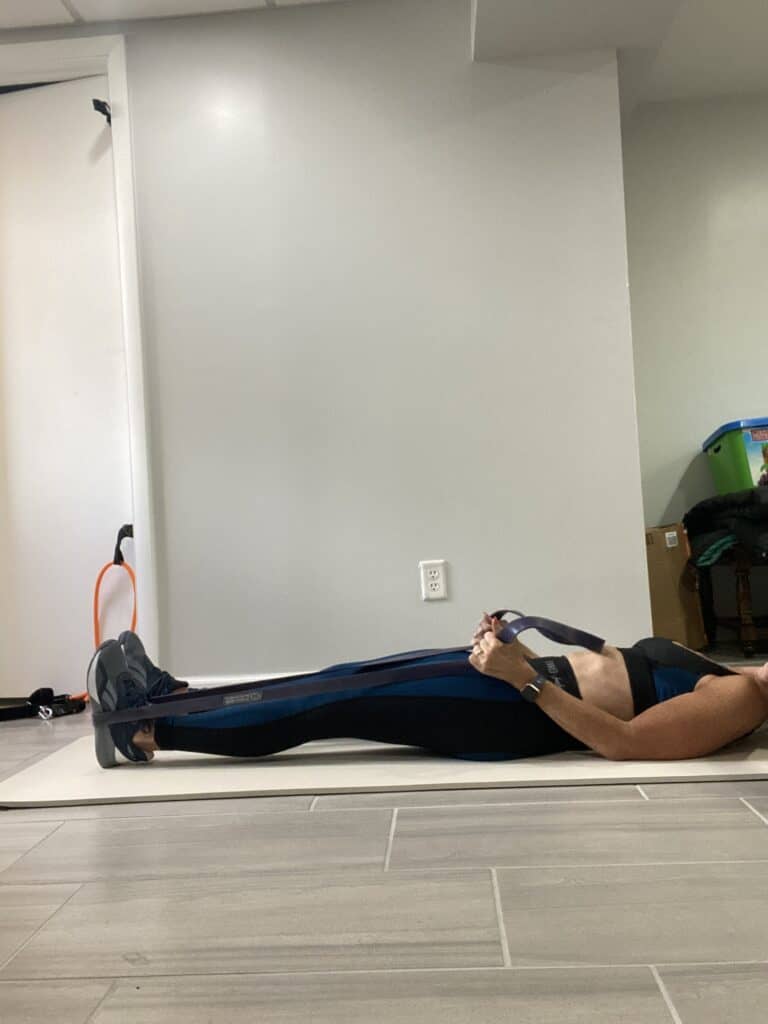
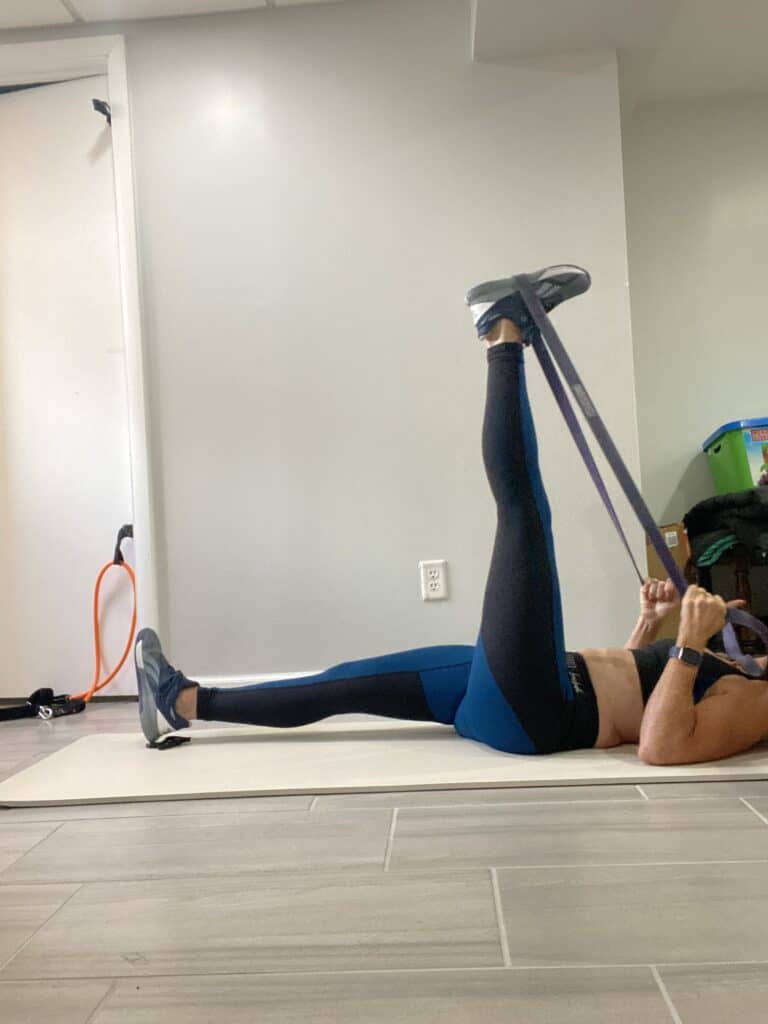
Lying Hip Extension
- Begin by lying on your back wrap the resistance band around your foot.
- Hold the band tightly with both hands.
- Squeeze your glutes as you bring your knee to your chest,
- Then, straighten your leg and raise it to 45- 90 degrees.
- Repeat this for 8-12 times. As you progress, you can do 2-3 sets of this exercise per leg.

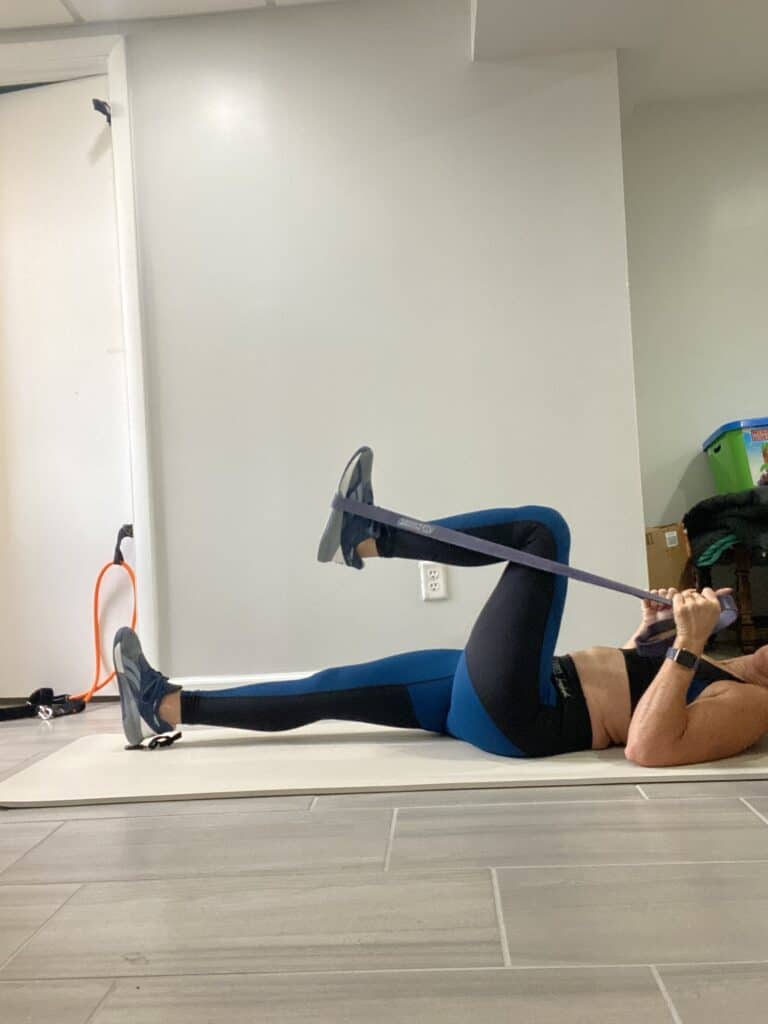

Lying Glute Extension
This one is great for the glutes, hamstrings, and hip flexors.
- Begin by lying on your back with the band around one foot.
- Grab the end of the band with both hands.
- Pull the band towards your chest.
- Bring your leg or foot over the opposite leg’s quad (or shin).
- This may be a limited motion for you, so only take it as far as you are comfortable.
- Do 8-12 reps on each leg and progress to 2-3 sets per leg.

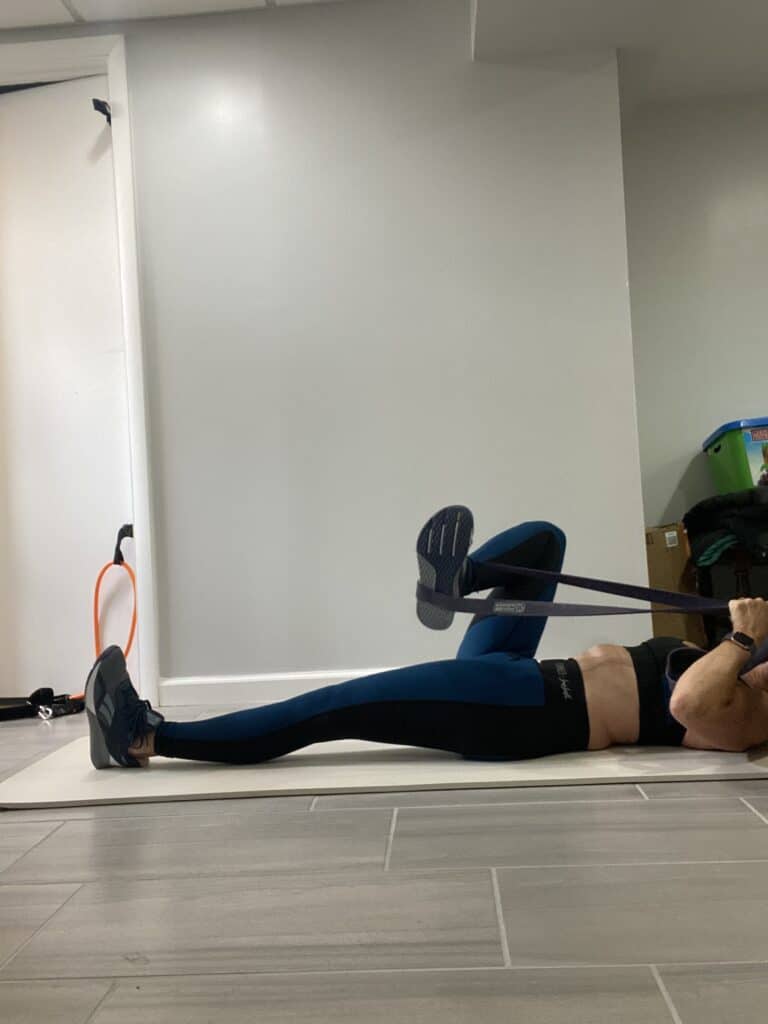
Additional Resistance Band Exercises to Include as You Progress:
As you get stronger, try adding new exercises to your resistance training routine.
Here are some of the best exercises to help increase your muscle mass and keep a healthy weight.
Clamshells
Perfect exercise for the glutes and hip flexors.
- Begin by lying on your right side.
- Place the resistance band above your knees.
- Bend knees to 90 degrees.
- Lift your left knee, pointing up to the ceiling while keeping your feet together.
- Lower the left knee back to the right knee.
- Repeat 10 times, then roll to the left side and repeat on the right leg.
- As you progress, try to do 2-3 sets per leg.
Standing One Leg Side Raise
This is a great exercise for the hip flexors and core muscles. It can also improve your stability and balance.
- Begin by standing with a resistance band around the ankles.
- You may want to be by a wall or chair for support.
- While standing on one leg, raise the opposite leg out to the side.
- Do 8-12 reps and increase to 2-3 set of 8-12 reps as you progress.
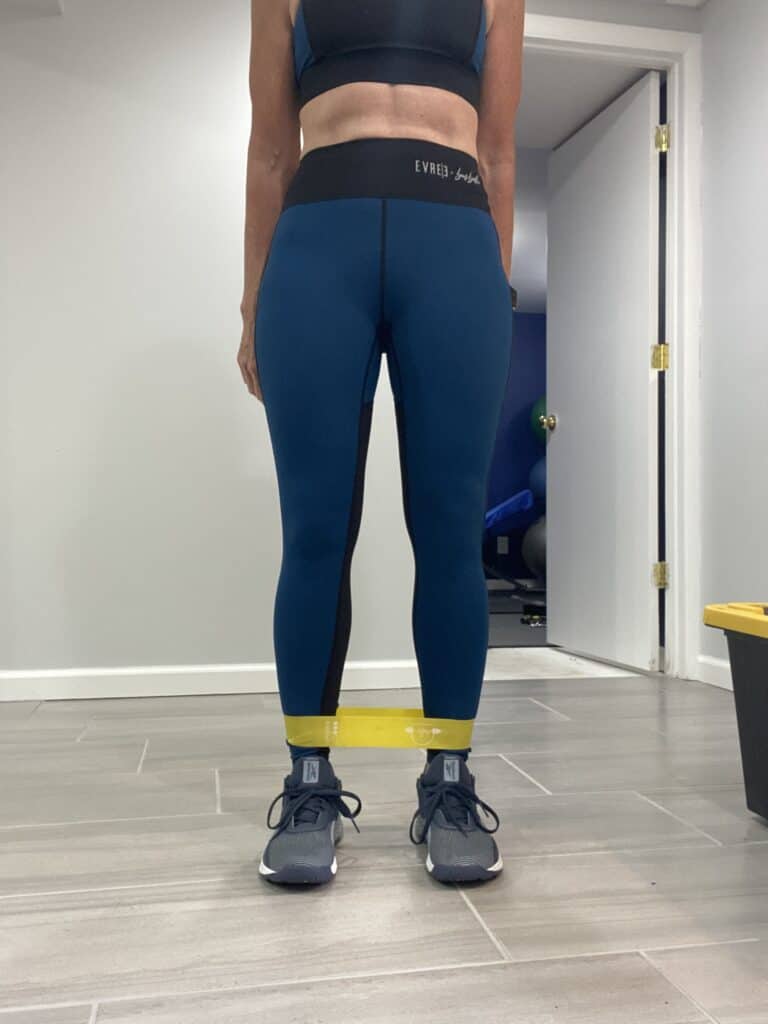
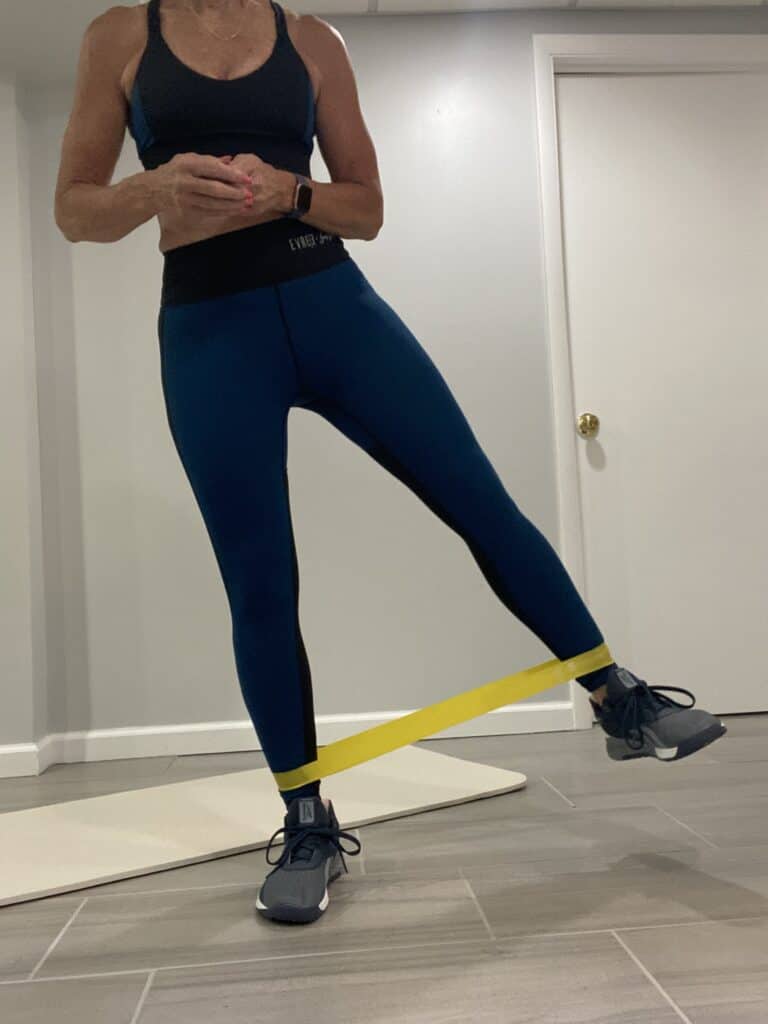
Glute Bridges
Perfect exercise for glutes, hamstrings, calves, and lower back.
- Begin by lying on your back with your exercise band around your legs above the knees. (Don’t put the band on the knees; this could cause a knee injury.)
- Lift your butt and push the band outward. It’s okay if you can only push out slightly; you will get stronger and better with time.
- Lower your butt and release the resistance. (you can also do pulses or hold the position for an extended time before lowering)
- Then, repeat 8-12 times.
Good Mornings
This one is great for the glutes, hamstrings, and lower back.
- Place a resistance band under your feet and behind the neck.
- Stand with your feet shoulder-width apart and hinge at the hips, keeping your back straight.
- Slowly lower upper body and band towards the ground, then return to the starting position.
- Repeat for 10-15 reps.
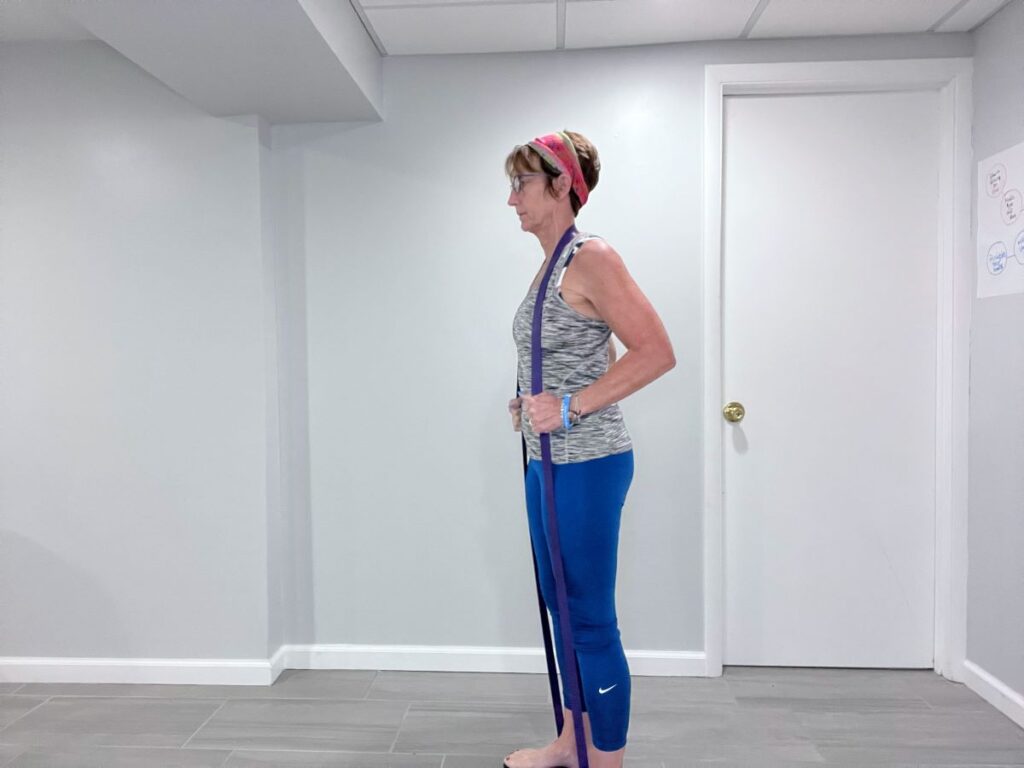
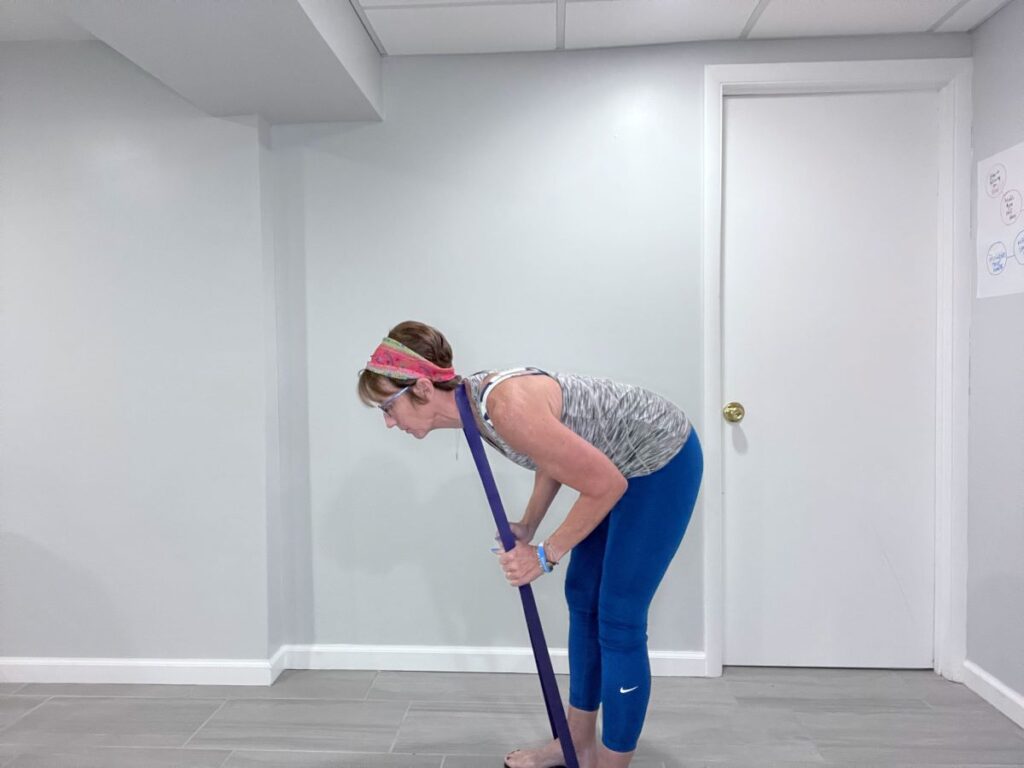
Calf Raises
- Start in a standing position with a loop band under both feet.
- Grab the band on either side with both hands.
- Feet shoulder-width apart, and toes pointed forward.
- Stand close to a chair or a wall for support.
- Lift both heels off the floor and hold for a few seconds before slowly lowering them back down. If this is too hard at first, just do one foot at a time.
- Repeat this exercise 8-10 times for 2-3 sets, resting between each set.
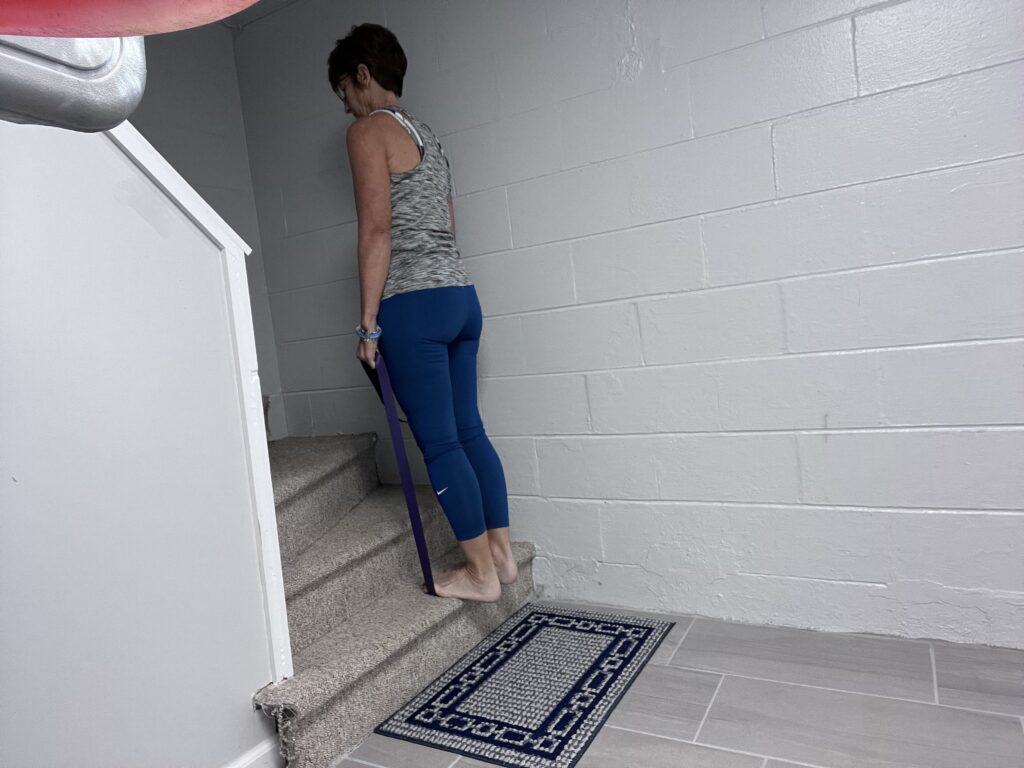
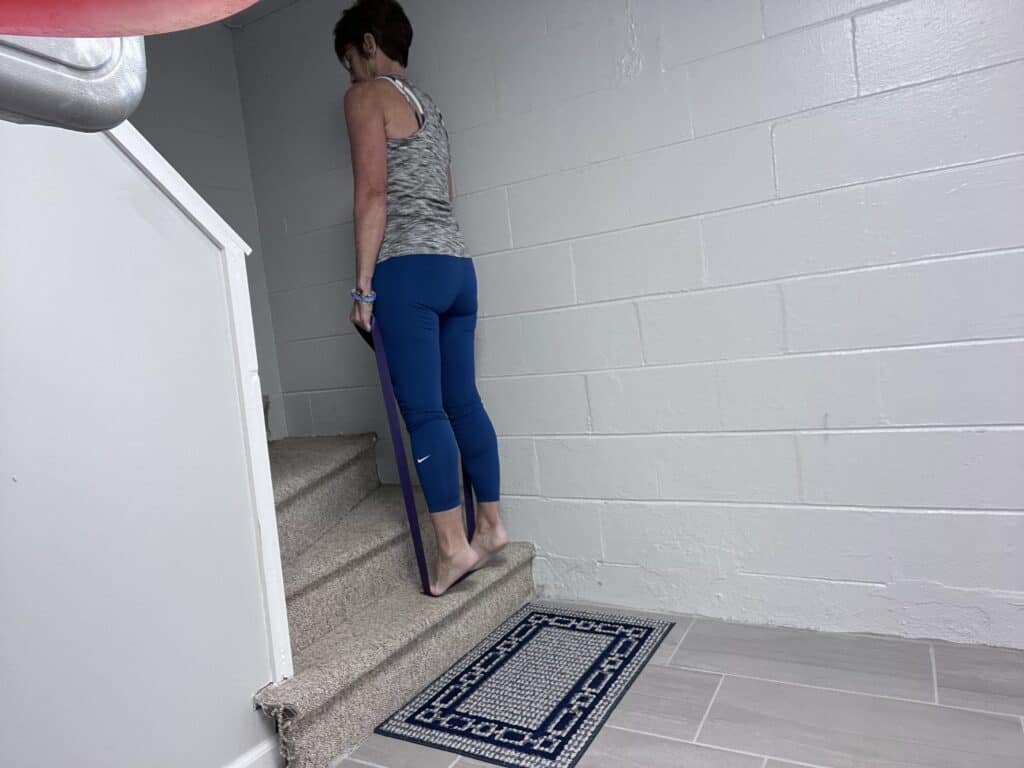
Squats
- Begin standing with a resistance band above the knees.
- Place feet shoulder-width apart.
- Slowly lower your upper body while pushing your buttocks back as if sitting in a chair.
- Lower as far as you can without causing pain.
- Pause for a few seconds.
- Return to a standing position as you push your heels into the ground.
- Repeat 8-12 times.
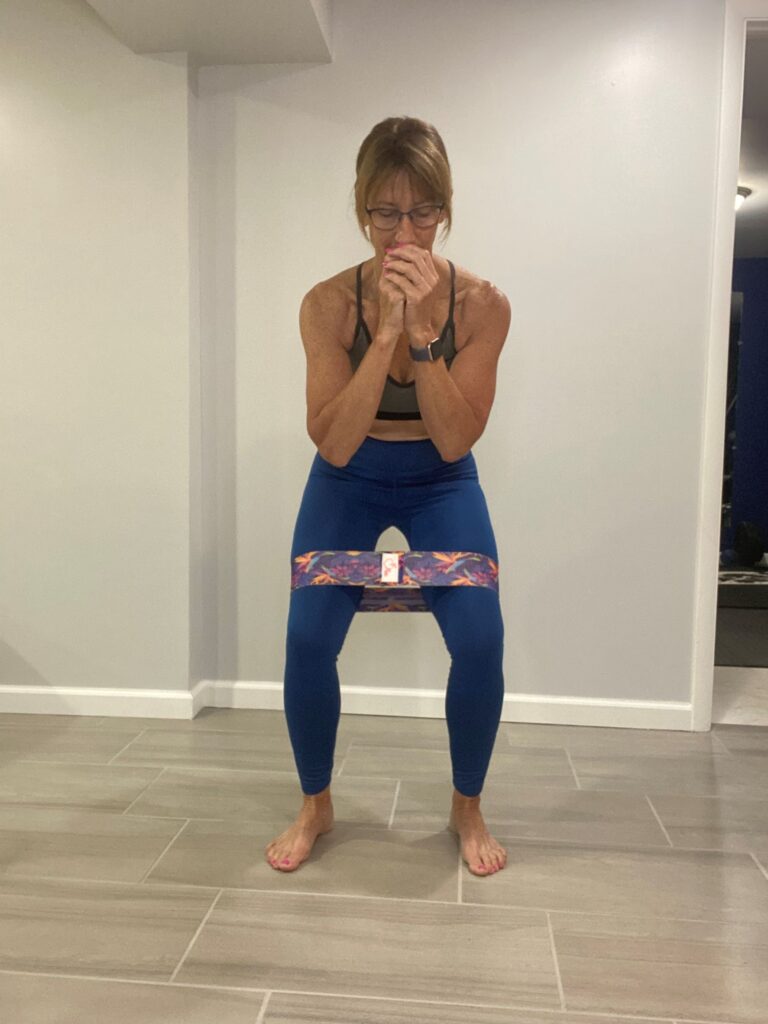
How Often Should You Do Knee Exercises
It’s important to do these exercises often enough to get results but not too much, causing you to overstrain your knees.
- Frequency: Starting 2-3 times per week.
- Duration: 15-30-minute sessions are best, but listen to your body and don’t push into pain.
- Consistency: Consistency is super important in building stronger muscles
When to Avoid Resistance Band Exercises
It’s important to listen to our body and stop any exercises that lead to discomfort beyond mild soreness.
If you experience severe pain, inflammation, or swelling in the knee joint, stop using the bands until you talk to your healthcare team.
Your provider may want to refer you to a physical therapist or an athletic trainer so they can instruct you on the best way to use the bands before you return to exercises on your own.
Activities that cause sharp pain or increase symptoms could worsen your joint health.
Can Resistance Bands Help with Arthritic Knee Pain?
Starting an exercise program can be tough, especially if you’re dealing with knee pain.
Your knee hurts, and you’re afraid to irritate it further. I get it!
But the truth is that if you don’t start moving, your muscles will weaken, and your knee pain will most likely increase.
Plus, you might pack on some extra pounds that’ll make your knees cry out for mercy.
The good news?
Exercise can actually help to decrease your pain, improve sleep, boost energy, and even ease anxiety and depression.
But before you jump into any exercise program, it’s important to talk to your doctor.
We all are at different fitness levels, so it’s important to start at your own level and take it slow.
Don’t overdo it, or you’ll become too sore to continue, and you’ll want to give up.
It’s a balancing act at first, but the payoff is worth it in the end!
